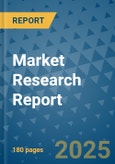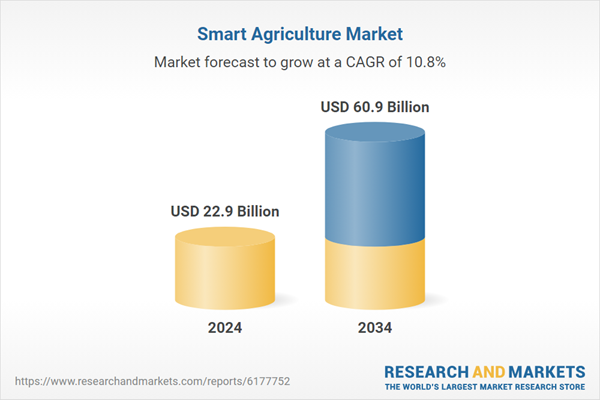Rising food demand driven by rapid population growth, labor shortages in the agriculture workforce, and escalating climate challenges is fueling the shift toward technology-driven farming. Governments and industry leaders are responding with targeted strategies to improve agricultural efficiency, boost resilience, and promote long-term sustainability. With global food requirements projected to rise by 60% by 2050, there is a growing urgency to enhance productivity using innovative digital tools and automation. Smart agriculture is becoming central to addressing climate-related disruptions like erratic rainfall, rising temperatures, and increased natural disasters that threaten yields and food safety. As a result, digitalization in farming operations is rapidly gaining momentum, supported by funding initiatives and strategic partnerships across public and private sectors. A key enabler of this transformation is precision farming, which leverages real-time data and automation to optimize inputs and outputs, reduce resource waste, and enhance food security across geographies.
The hardware and equipment segment generated USD 14.1 billion in 2024 and is forecast to register a CAGR of 10.9% through 2034. This segment continues to gain traction as modern farms adopt connected equipment powered by sensors, robotics, and AI. Advanced machinery and autonomous systems are making it easier for agricultural producers to improve yields and monitor field conditions with greater accuracy and less manual effort.
The crop production segment accounted for a 61% share in 2024 and is expected to grow at a CAGR of 10.6% between 2025 and 2034. The integration of digital tools, such as remote sensing, precision irrigation, and real-time soil monitoring, is transforming how crops are cultivated, managed, and harvested. Smart solutions are enhancing productivity by optimizing inputs, reducing waste, and ensuring healthier yields through advanced monitoring and data analytics.
United States Smart Agriculture Market held a 76% share in 2024 and generated USD 4.6 billion. Growth in the region is fueled by aggressive federal support aimed at improving sustainable farming practices. In 2024 alone, billions in funding were allocated to help farmers implement eco-friendly strategies over millions of acres of land. These efforts are encouraging the adoption of technologies that support conservation, soil health, and climate adaptation.
Key players active in the Global Smart Agriculture Market include Bayer, CNH Industrial, Mahindra & Mahindra, Kubota, Trimble, Taranis, CLAAS Group, Monarch Tractor, Prospera Technologies, Topcon, John Deere & Company, AGCO, Yara International, Farmers Edge, and Carbon Robotics. Leading smart agriculture companies are investing heavily in automation, AI, and IoT to deliver integrated farming solutions that enhance precision and reduce operational costs. Strategic acquisitions and collaborations with agritech startups allow them to expand technological capabilities and offer data-driven platforms for real-time decision-making. These companies are also building partnerships with regional governments and cooperatives to boost adoption in emerging markets. Many are focusing on scalable, modular equipment to appeal to both large commercial farms and smaller agricultural producers.
Comprehensive Market Analysis and Forecast
- Industry trends, key growth drivers, challenges, future opportunities, and regulatory landscape
- Competitive landscape with Porter’s Five Forces and PESTEL analysis
- Market size, segmentation, and regional forecasts
- In-depth company profiles, business strategies, financial insights, and SWOT analysis
This product will be delivered within 2-4 business days.
Table of Contents
Companies Mentioned
The companies profiled in this Smart Agriculture market report include:- AGCO
- Bayer
- Carbon Robotics
- CLAAS Group
- CNH Industrial
- Farmers Edge
- John Deere & Company
- Kubota
- Mahindra & Mahindra
- Monarch Tractor
- Prospera Technologies
- Taranis
- Topcon
- Trimble
- Yara International
Table Information
| Report Attribute | Details |
|---|---|
| No. of Pages | 180 |
| Published | September 2025 |
| Forecast Period | 2024 - 2034 |
| Estimated Market Value ( USD | $ 22.9 Billion |
| Forecasted Market Value ( USD | $ 60.9 Billion |
| Compound Annual Growth Rate | 10.8% |
| Regions Covered | Global |
| No. of Companies Mentioned | 16 |









